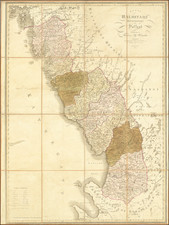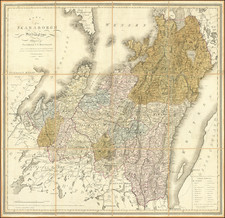Search
Carl Gustaf Forsell, initially Carl Gustaf Forssell, was born on March 18, 1783, at Sköttorp, in the Järpås parish of Skaraborg, Sweden. He died on October 25, 1848, in Stockholm. His parents were Captain Fredric Joseph Forsell and Maria Dorothea de Bruce.
He started his military education as a cadet at the Karlberg military academy from February 6, 1796, to September 30, 1800. He then became a midshipman in the navy on October 20, 1800, and a junior lieutenant in the field survey corps on November 18, 1806. Forsell climbed the ranks, becoming a captain in the army by June 29, 1809, and later, a major.
Forsell worked on several cartography projects, contributing to the mapping of Sweden’s coastlines and landscapes. His military service included participating in the 1798 naval expedition on the frigate Ulla Fersen and contributing to the early surveys for the Göta Canal between 1808 and 1809. In the early years, he was commanded to map the Bohuslän archipelago and later, between 1804 and 1808, funded by Bergsrådet S.G. Hermelin, he traveled and created maps of Bohuslän, Halland, Västergötland, Småland, and Blekinge, contributing significantly to the geographical documentation of Sweden.
He was ennobled on February 11, 1817, and continued to serve in various capacities, including as the Director-General of the Swedish Land Survey from January 29, 1824. He also attained the rank of colonel in the army on June 3 of an unspecified year.
On September 3, 1818, Forsell married Clementina Magdalena Geijer, the daughter of Salomon Eberhard Geijer and Ulrica Charlotta Zidén, and widow of Johan Daniel Psilander.
Apart from his military and surveying work, Forsell was involved in public service and civic initiatives. He contributed to the early development of Sweden's transportation infrastructure and public banking. He was also recognized with several Swedish and foreign orders for his service and achievements.
Forsell's contributions extended to societal reforms, including support for the temperance movement and educational initiatives. He lived in Stockholm, where he was active in various community and national projects until his death in 1848. His life and work were documented in detail by his daughter Marie-Louise af Forsell in her extensive diaries.


